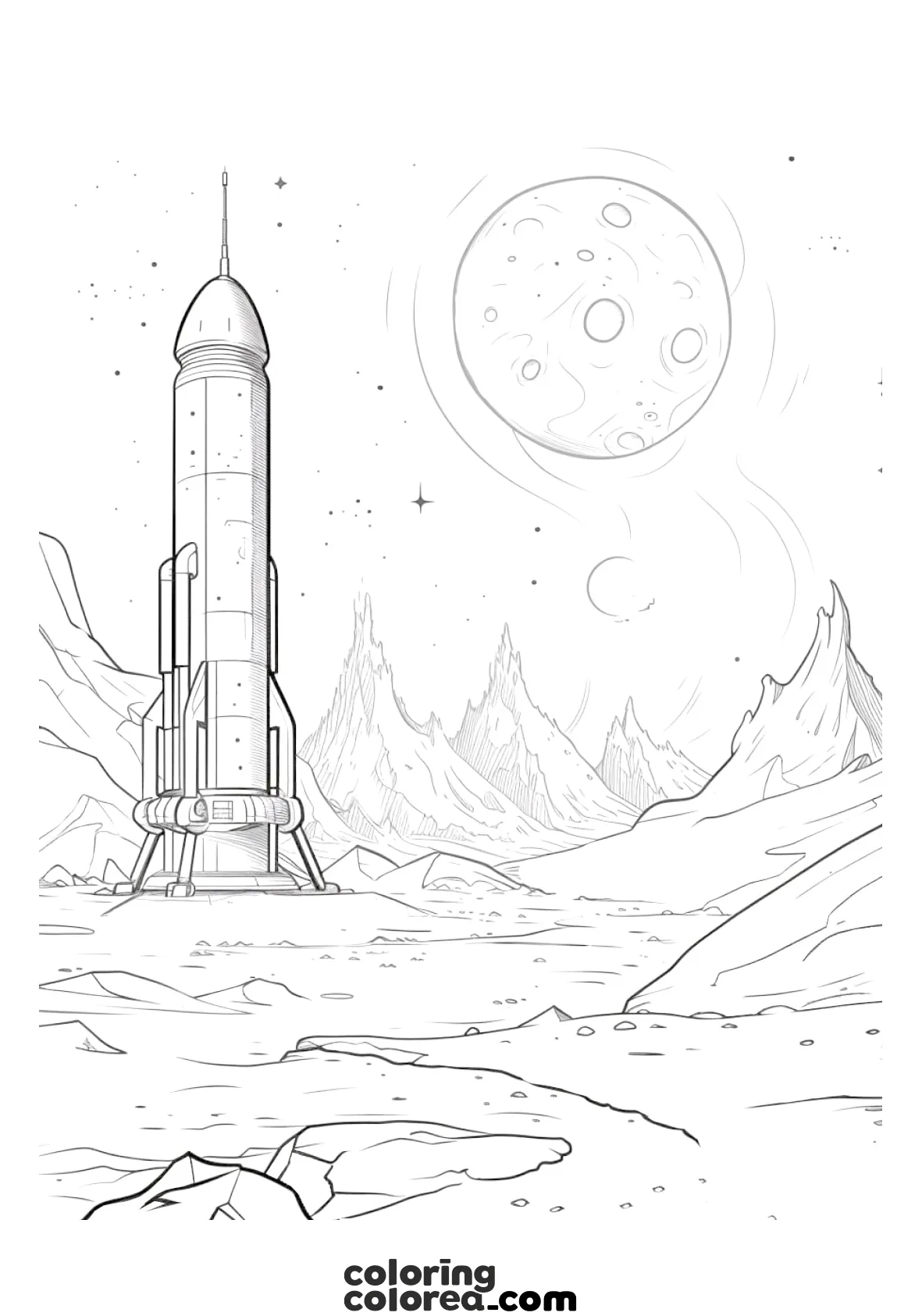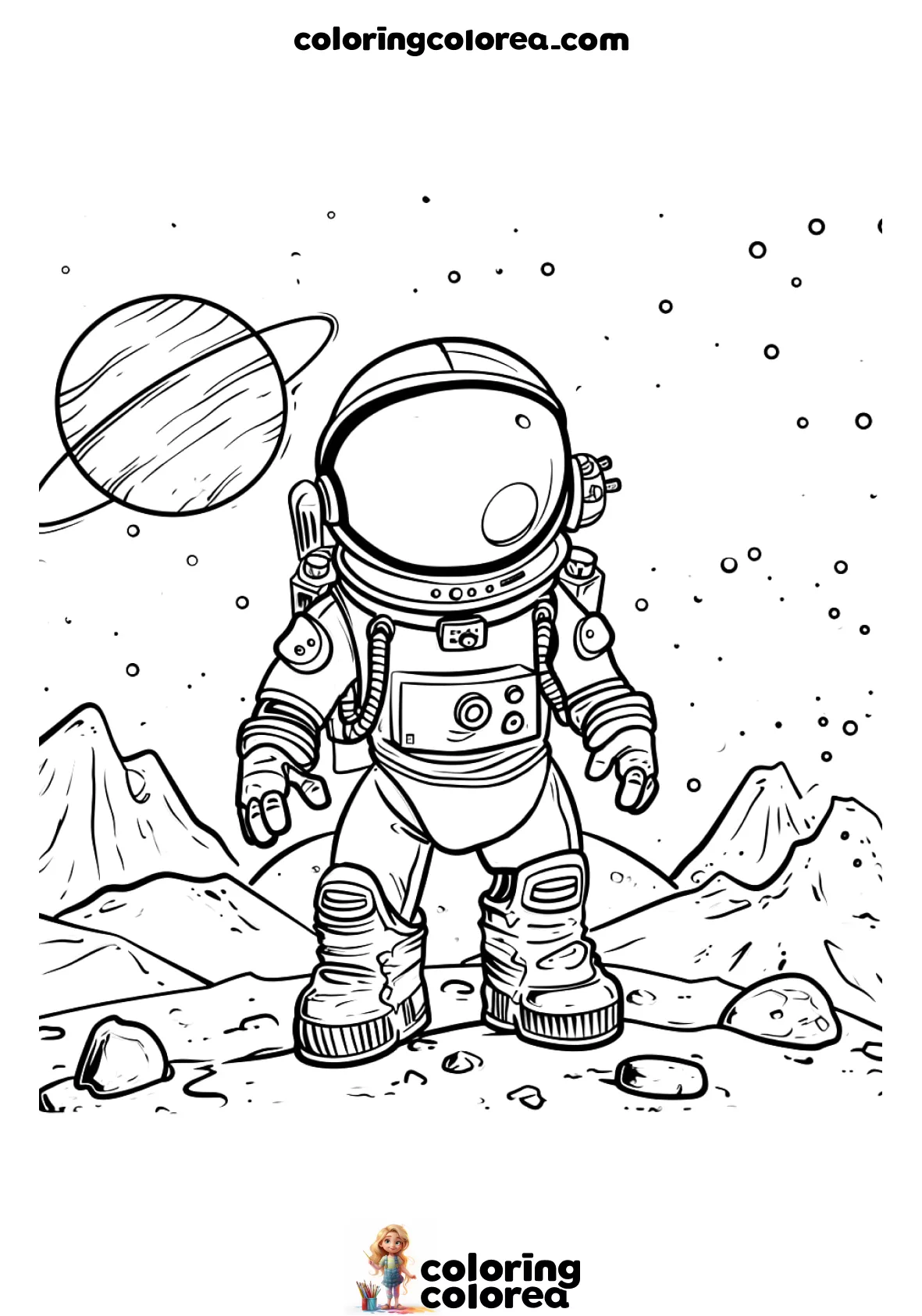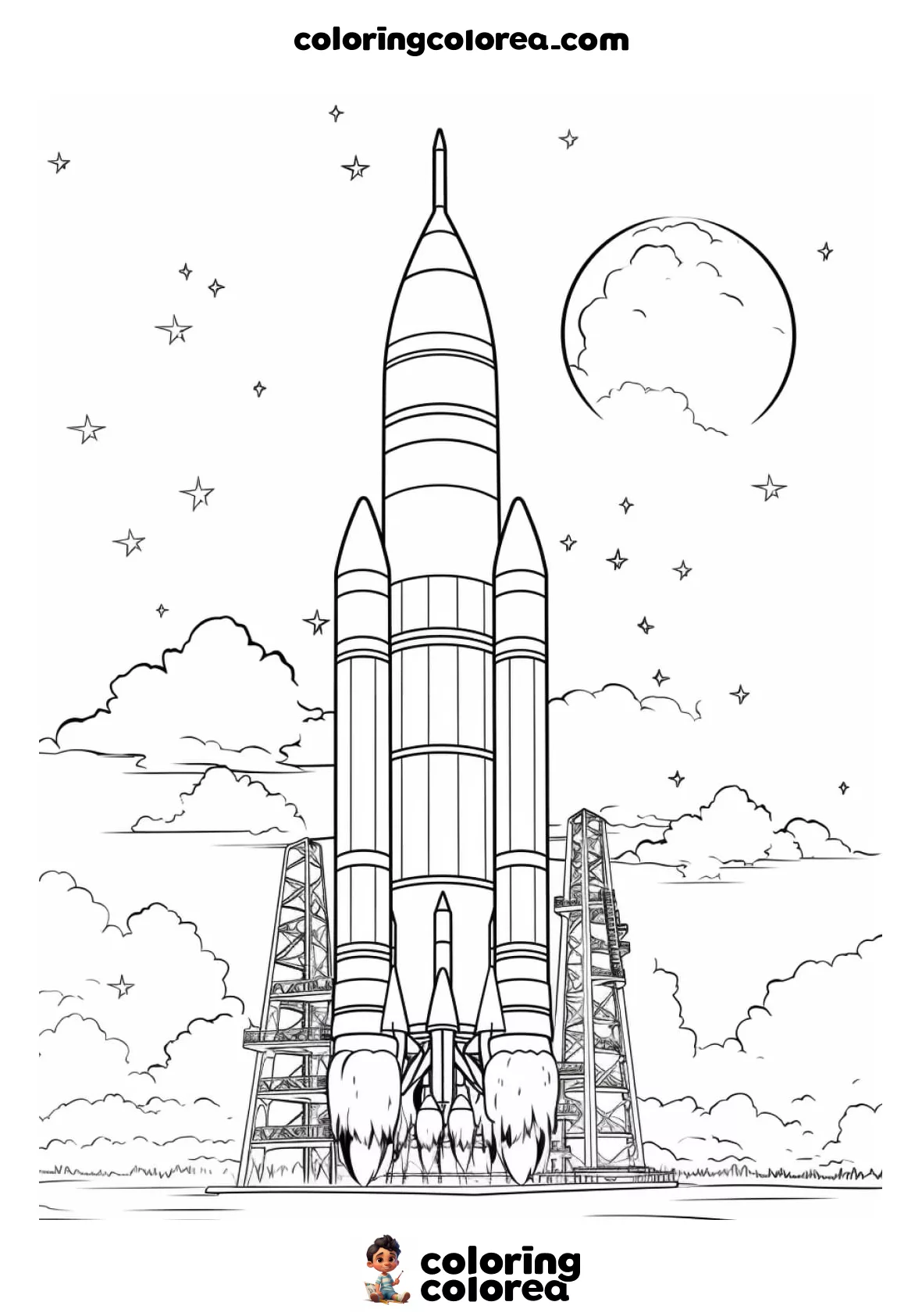Space shuttle colouring tips and ideas
- Space shuttle: The shuttle’s main body is typically white, with black details on the windows, edges, and structural lines. Use light gray for shadows to emphasize the cylindrical shape of the shuttle. Add highlights in light blue or silver to simulate the metallic shine.
- Engines and flames: The flames from the engines should be vibrant. Use warm tones like yellow, orange, and red to depict the energy of the launch. Add touches of bright blue near the base of the flames to create a high-temperature effect. Use upward strokes to reflect movement.
- Planet: The background planet can be colored in earthy tones: browns, greens, and blues to represent oceans and continents. For a more imaginative touch, try vibrant purples and blues to depict an unknown planet.
- Space and stars: The space background should be black or very dark blue to convey the vastness of the universe. Stars can be highlighted in white or bright yellow. For a special touch, use metallic or glitter pencils for a unique sparkle.
- Clouds and smoke: The clouds of smoke around the launch can be represented in light gray and white, with soft shading to simulate their texture. Use circular strokes to give them volume.
- Additional technique: Use fine-tipped colored pencils for small details like the stars and the shuttle’s windows. If working with crayons or markers, apply gradient techniques to avoid harsh transitions between colors.
The legacy of the shuttle Challenger
The shuttle Challenger is a symbol of both human daring and the fragility of our dreams. First launched in 1983, this shuttle was a fundamental part of space history, carrying out important scientific missions. However, its tragic accident in 1986 reminded us of the risks inherent in exploration and the need to keep innovating and learning from our mistakes. The shuttle exploded within seconds of liftoff, broadcast live on television all over the world. The space shuttle Challenger reminded us of the importance of dreaming big and exploring the unknown.
If you are passionate about everything related to astronauts, rockets, and space, I recommend that you follow the SpaceX project closely. There are some really interesting documentaries and reports on the main streaming platforms such as Netflix or Prime.























